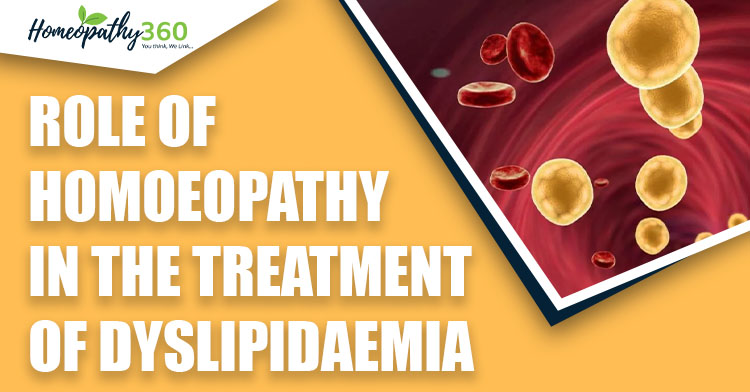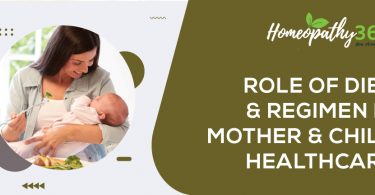
ABSTRACT
The high serum total cholesterol and high level of low-density lipoprotein cholesterol is a very important risk factor for coronary artery diseases. This increased level of lipids is called dyslipidaemia or hyperlipidaemia. Dyslipidaemia causes remarkable cardiac problems in patient. It causes heart diseases in patient like coronary artery disease (CAD), which is a blockage in the artery of heart and peripheral artery disease (PAD), these diseases lead to atherosclerosis, hypertension, heart-attack, strokes. Nowadays CVD is a most dangerous and most commonly occurring diseases. Homoeopathy has a big role to diminished cholesterol level in patients who are suffering from dyslipidaemia. and by decreasing level of cholesterol we can avoid forcoming cardiac diseases which could occur by dyslipidaemia. In the following article, dyslipidaemia is being describedand how homoeopathic remedies could treat this dyslipidaemia. By homoeopathic treatment, one can also decrease the complications of CVD.
KEYWORDS: Homoeopathy, dyslipidaemia, CVD, CAD, PAD, homoeopathic remedies, miasm, repertory.
Abbreviations: coronary artery disease (CAD), peripheral artery disease (PAD), cardiovascular disease (CVD), coronary heart disease (CHD), low-density lipoprotein (LDL), coronary heart disease (CHD), very low-density lipoprotein (VLDL), high-density lipoprotein (HDL)
INTRODUCTION
Coronary heart disease (CHD) is one of the largest contributors to mortality and morbidity worldwide. Globally, CHD accounts for 17.5 million deaths in 2012, with over 75% of deaths occurring in developing countries [1,2]. By 2015, 16% of all female and male deaths were caused by CHD [3].
Dyslipidaemia is thought to be a primary risk factor for CHD and may play a role before other risk factors appear.
When we look at the various types of lipoproteins, it is the level of low-density lipoprotein (LDL) cholesterol that is most directly associated with CHD. While very low-density lipoprotein (VLDL) has also been shown to be associated with premature atherosclerosis, it is more strongly associated with peripheral vascular disease. (e.g. intermittent claudication) than with CHD. High-density lipoprotein (HDL) cholesterol is protective against the development of CHD – the higher its mean level in a group of individuals, the lower the incidence of infarction in that group. HDL should be more than 40 mg/dl.
To further refine CHD risk prediction based on serum lipid levels, a total “cholesterol/HDL ratio” has been developed. A ratio of less than 3.5 has been recommended as a clinical goal for CHD prevention.
With newer techniques, high-density and low-density lipoproteins have been further subdivided into sub-fractions Recent evidence indicates that levels of plasma apolipoprotein-A-1 (the major HDL protein) and apolipoprotein-B (the major LDL protein) are better predictors of CHD than HDL cholesterol or LDL cholesterol respectively. Therefore, measurement of apolipoproteins may replace lipoprotein cholesterol determinations in assessing the risk of CHD [4].
PHYSIOLOGY
Lipids are transported and metabolised by apolipoproteins, which combine with lipids to form spherical or disc-shaped lipoproteins, consisting of a hydrophobic core and a less hydrophobic coat. The structure of some apolipoproteins also enables them to act as enzyme co-factors or cell receptor ligands. Variations in lipid and apolipoprotein composition result in distinct classes of lipoprotein that perform specific metabolic functions.
LIPID AND CVD
Plasma lipoprotein levels are major modifiable risk factors for cardiovascular disease. Increased levels of atherogenic lipoproteins (especially LDL, but also IDL lipoprotein(a) and possibly chylomicron remnants) contribute to the development of atherosclerosis. Increased plasma concentration and reduced diameter favour subendothelial accumulation of these lipoproteins. Following chemical modifications such as oxidation, Apo B-containing lipoproteins are no longer cleared by normal mechanisms. They trigger a self-perpetuating inflammatory response during which they are taken up by macrophages to form foam cells, a hallmark of atherosclerotic lesions. These processes also have an adverse effect on endothelial function.
Conversely, HDL removes cholesterol from the tissues to the liver, where it is metabolised and excreted in bile. HDL may also counteract some components of the inflammatory response, such as the expression of vascular adhesion molecules by the endothelium. Consequently, low HDL cholesterol levels, which are often associated with TG elevation, also predispose to atherosclerosis.
Management of dyslipidaemia
Lipid-lowering therapies have a key role in the secondary and primary prevention of cardiovascular diseases. Assessment of absolute risk, treatment of all modifiable risk factors and optimisation of lifestyle, especially diet and exercise, are central to management in all cases [5]. One of the most important things in the natural treatment of dyslipidaemia is to reduce body weight and take regular exercise, which will help to regulate blood cholesterol and decrease the high risk of developing cardiovascular diseases, especially coronary heart disease.
MIASMATIC BACKGROUND: – Accumulation of lipid is sycotic miasm, and if one thinks about arteriosclerosis so there is thickening which is sycotic, while loss of elasticity belongs to syphilitic miasm.
REPERTORY: – Homoeopathic repertory is unique which indexes the symptoms systematically for easily finding the remedy. In homoeopathic repertory, the term “arteriosclerosis” had been used which means thickening and loss of elasticity of the walls of arteries of all sizes. There are many forms of this classified by the types of lesions and arteries involved, such as atherosclerosis with fatty lesions in the arterial intima of medium and large muscular arteries [6].
SYNTHESIS REPERTORY
CHEST–ARTERIOSCLEROSISof coronaries: – Ars-I., aur.,Bar-c., bar-i., cact.,Crat.
GENERALS-OSSIFICATION- ARTERIES; of :- aur., Bar-c., lith-c., sec., vario.
GENERALS- BLOOD VESSELS -COMPLAINTS OF ARTERIES; of :- Cact.
GENERALS-INFLAMMATION- Blood vessels- Arteries: – ars., Calc., carb-v., Kali-i., Nat-i.,sulfa.
GENERALS- BLOOD VESSELS-degeneration of :- bar-c., bar-m., vanad[7].
PHATAK’S REPERTORY
ARTERIO SCLEROSIS: – sumb[8].
MURPHY’S REPERTORY
ARTERIO SCLEROSIS: – Ars-i., Arn., Calc., Glon., Stront-c., Stront-i., Tab., Vanad., Visc.
ATHEROMA: – aur-m., bell., brom., Calc., Calc-f., caps., Graph., Lac-ac., Lach., Plb., Sil., sulph.
elderly people in :- Lach.
morbus brighti , in :- ph-ac.
obese person, in :- caps.
pulmonary arteries, dilatation of right heart :- phos.[9]
COMPLETE REPERTORY
CHOLESTEROL increased: chlf. cortiso. dulc. ins. mag-f. perh. sulph. thyreotr.
GENERALITIES – ARTERIOSCLEROSIS –Adren., Am-i., Ars-i., Cupr., Glon., Nat-i., Kali-i., Stront-i., Stroph-h.10
BOGER BOENNINGHAUSEN CHARACTERISTICS AND REPERTORY
CIRCULATION- BLOOD-VESSELS- distended-, swelled- hard, sclerotic, thickened – Arn.. aur.. calc-ar.. calc-c.. cup.. flu-ac.. form… iod., plb.. sec-c., stro.. tab.. vis-a.11
BOERICKE’S REPERTORY
CIRCULATORY SYSTEM- ARTERIES- Atheroma of arteries – Adren., Am-i., Am-van., Aur., Phos., Plb., Plb-i., Polyg-a., Sec., Stront-c., Stront-i., Sumb., Vanad.[12]
SOME INDICATED HOMOEOPATHIC MEDICINES :-
AURUM METALLICUM:- Arteriosclerosis, high blood pressure, nocturnal paroxysms of pain behind the sternum. Sclerosis of liver, arterial system, brain.
CACTUS GRANDIFLORUS :- Constriction of the heart, as if from an iron band. Endocarditis with mitral insufficiency together with violent and rapid action. Acts best in the incipiency of cardiac incompetence. Weakness of the heart in arteriosclerosis. Low blood pressure.
CALCAREA FLUORICA :- Arteriosclerosis; threatened apoplexy. Chief remedy for vascular tumours with dilated blood vessels and for varicose or enlarged veins.
CUPRUM METALLICUM :- Angina pectoris. Slow pulse; or hard, full and quick. Palpitations, precordial anxiety and pain. Fatty degeneration.
PHYSOSTIGMA-VENENOSUM :- Feeble pulse; palpitations, spasmodic action, with feeling of pulsations throughout the body. Heart beats distinctly perceptible in chest and head. Fluttering of heart felt in the throat. Fatty degeneration.
SQUILLA MARITIMA :- A cardiac stimulant affecting the peripheral vessels and coronary.
VANADIUM-METALLICUM :- A remedy in degenerative conditions of the liver and arteries. Arteriosclerosis, sensation as if the heart was compressed, as if blood had no room in the aorta. Anxious pressure on the whole chest. Fatty heart[12].
GUATTERIA GAUMERI:- Guatteria gaumeri Greenman (Annonacease) has been used as bark infusion in the traditional mexican medicine for the treatment of hypercholesterolemia and cholelithiasis [13].
CONCLUSION :-
Despite the wealth of data supporting the beneficial effects of pharmacologic therapy on cardiovascular risk, patients often express a desire to accomplish similar goals with diet alone. In one of the studies from low-fat vegetarian diet plus exercise, stress management and group support have numerous additional benefits beyond lowering LDL cholesterol by 40%. These comprehensive lifestyle changes caused a 91% reduction in angina and significant improvements in myocardial perfusion and ventricular function after only 1 month as compared to control group. All medications, including lipid-lowering drugs have side effects, known and unknown. In contrast, it costs virtually nothing additional to eat a healthful diet, walk, meditate, and quite smoking and only side effects of these behaviours are beneficial ones [14].
It is nearly three decades since it became clear that elevation of serum cholesterol was one of the factors which carried an increased risk for the development of myocardial infarction. Today, there is a vast body of evidence showing a triangular relationship between habitual diet. blood cholesterol-lipoprotein levels and CHD, and that these relationships are judged to be causal. There is no population, in which CHD is common, that does not also have a relatively high mean level of cholesterol (i.e. greater than 200 mg/dl in adults).
It is now well-established fact that a persistently high cholesterol level can almost certainly precipitate a cardiac event such as CHD. Still most people do not have an idea of nutritional requirements and a balanced diet. Unhealthy dietary practices include a high consumption of saturated fats, salt and refined carbohydrates, as well as a low consumption of vegetables and fruits and these tend to cluster together [4].
References
- World Health Organization, Global Status Report on Non-Communicable Diseases 2014, World Health Organization, Geneva, Switzerland, 2014.
- R. Gupta, I. Mohan, and J. Narula, “Trends in coronary heartd disease epidemiology in india,” Annals of Global Health, vol. 82, no. 2, 2016.View at: Google Scholar
- M. Zhao, I. Vaartjes, I. Graham et al., “Sex differences in risk factor management of coronary heart disease across three regions,” Heart, vol. 103, no. 20, pp. 1587–1594, 2017.View at: Publisher Site | Google Scholar
- PARK K. Park’s textbook of preventive and social medicine. 23rd ed. M/s Banarsidas Bhanot Publishers; 2015.
- Walker BR. Colledge NR. Ralston SH. Perman ID., Davidson’s principles & practice of medicine. 22nd ed. CHURCHILL LIVINGSTONE ELSEVIER; 2014.
- Bhalerao RD, Manchanda RK, Roja V. Homoeopathy in the management of Dyslipidaemia: A short review. Indian J Res Homoeopathy 2015;9:258-66.
- Schroyens F. Augmented clinical synthesis repertorium homoeopathicum syntheticum. 9.1th ed. Noida: B JAIN PUBLISHERS(P) LTD; 2016.
- PHATAK S.R. A concise repertory of homoeopathic medicines alphabetically arranged. 4th ed. Noida: B JAIN PUBLISHERS(P) LTD; 2005.
- MURPHY R. Homeopathic Medical Repertory: A Modern Alphabetical and Practical Repertory. 3rd ed. New Delhi: B JAIN PUBLISHERS(P) LTD; 2019.
- Zandvoort R. V. Complete Repertory Version 4.5. RADAR
- Boger C.M. Boger Boenninghausen’s Characteristics & Repertory with corrected & abbreviations & word index. 51st impression. New Delhi: B JAIN PUBLISHERS(P) LTD; 2021.
- Boericke W. Boericke’s new manual of homoeopathic materia medica with repertory. 37th ed. B. JAIN PUBLISHERS (P) LTD; 2016.
- Chamorro G, Salazar M, Salazar S, Mendoza T. Farmacología y toxicología de Guatteria gaumeri y alfa-asarona [Pharmacology and toxicology of Guatteria gaumeri and alpha-asarone]. Rev Invest Clin. 1993 Nov-Dec;45(6):597-604. Spanish. PMID: 8159883.
- Dean O, Scherwitz LW, Billings JH, Gould KL, Merritt TA, Sparler S, et al. Intensive lifestyle changes for reversal of coronary heart disease. JAMA. 1998; 280 (23):2001-7. [Last accessed on 2015 Oct 02].
About The Authors:-
Dr Vandana Gupta, Junior Resident Doctor, Dept. of Case Taking & Repertory
State National Homoeopathic Medical College and Hospital, Lucknow.
Dr Rahul Kumar Nirala, Junior Resident Doctor, Dept. of Case Taking & Repertory
State National Homoeopathic Medical College and Hospital, Lucknow.
Dr Manoj Kumar Bharati Junior Resident Doctor, Dept. of Case Taking & Repertory State National Homoeopathic Medical College and Hospital, Lucknow.





